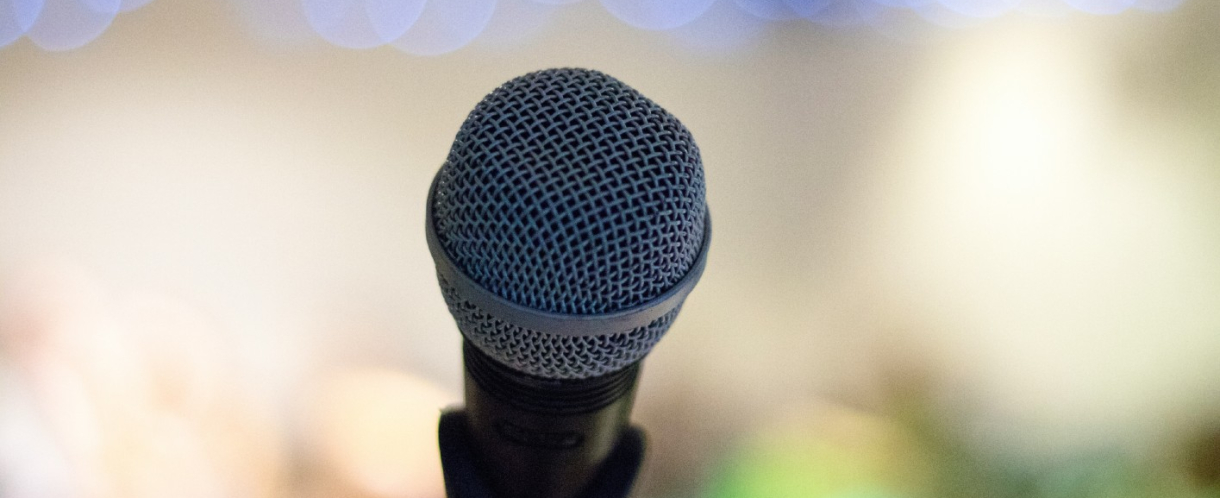
Image: Elliot Sloman
Uncomfortable question alert: what are you hiding when it comes to your career change? Where are you pretending things are different than they are? Natasha shares why you have to be honest – with yourself first, and then with others – if you want to start making progress toward a career you love.
“I came into this career change process exhausted from wearing a mask every day at work; constantly keeping up appearances and pretending to be someone I wasn’t. All I wanted was a career that felt authentic and simple and honest.
I didn’t expect that the hardest part of getting there would be being honest with myself.”
– Ron, Career Change Launch Pad participant
You’re tired, aren’t you?
You’re working so hard – at doing a good job, at making it through the day, keeping everyone contented and stable, trying to figure out what comes next.
You’re keeping things afloat, even though all you want to do is abandon ship.
And it’s driving you into the ground.
Working in an unfulfilling career carries a deep, painful feeling of inauthenticity.
Somewhere, to a greater or lesser degree, you’re maintaining a performance; pretending to be someone or something that isn’t true.
In the short term, it’s manageable. In the long term, it’s unbearable.
I hear the desire for a more authentic existence constantly, in different guises, from the career changers I work with:
- “I want to feel alive and engaged at work.”
- “I dream of being proud to tell people what I do for a living.”
- “I want to find something that feels like ‘me’.”
They want to find alignment between their inside-selves and their outside-selves; to feel the ease of swimming with the flow instead of constantly fighting upstream.
The problem is, many of us are painfully out of practice in showing up authentically in the world of work.
So many of us spent our careers thus far denying our wants and needs; trying to contort ourselves into job-spec boxes; to sell ourselves to people we don’t want to become in order to succeed in roles we don’t even like.
Living a lie becomes the default M.O.
So when we realise that something has to give – because we cannot continue in this state of inauthenticity – we suddenly find ourselves feeling out of touch, uncertain, and afraid.
We want authenticity and alignment, but it feels unfamiliar and scary. We’ve forgotten how to listen to ourselves and tell the truth about what we hear.
So, ironically, we tamp down the voices inside that are trying to guide us, and instead go about our career changes from a familiar place of inauthenticity.
We attempt to construct options and paths forward that feel achievable, or realistic, or appropriate, or admirable, but which are not true.
And either we stay stuck, pulled tight between truth and terror, or we allow ourselves to be driven by the fear of owning up to ‘what is’ and end up in another place that doesn’t fit who we are.
If I were pushed to choose one thing that unlocks everything else in the search for more fulfilling work – it would be the willingness to acknowledge and be with ‘what is’.
Being with ‘what is’ means engaging with how things are, not how you think they should be or wish they were.
It means telling the truth about where you’re at and what you want; first to yourself, and then to the wider world.
But when you’re so out of practice, where do you start?
Here’s somewhere to start: 3 things to know, and 5 things to do…
1. The truth is not tidy

“Listener up there! what have you to confide to me?
Look in my face while I snuff the sidle of evening,
(Talk honestly, no one else hears you, and I stay only a minute longer.)
Do I contradict myself?
Very well then I contradict myself,
(I am large, I contain multitudes.)”
– Walt Whitman (Song of Myself, 51)
Simplicity is seductive.
We crave a nice neat narrative – a sleek story that led us from A to B and points clearly toward C.
We want to see how the pieces fit together. If they don’t appear to neatly interlock, we won’t so much as pick them up.
But we humans are not neat. We are multifaceted and contradictory; gangly and inelegant; hopeful and messy and muddled. And the longer we try to deny our untidy nature, the longer we stay stuck.
Many career changers worry that their desires are conflicting:
- “I want to indulge my love of novelty, but I don’t want to be constantly chasing new projects.”
- “I want to work alone, but I also want to be part of a team.”
- “I want to do something in the ethical travel industry, but I also want to run a café.”
- “I want to do creative work, but I also want to achieve material success and be admired.”
When those desires appear to conflict, we dismiss them – or ourselves – as flighty and unrealistic, naive and unachievable, and cast them aside.
And yet, the unique combinations of desires that appear at first to be irreconcilably disparate are often our greatest guides.
They give us clear, specific criteria to play by; thought-provoking conversations to have; delightfully interesting questions to ask.
- “Which working environments provide lots of variety in their work, and also offer a stable income?”
- “Who do you know who works independently and also has a great community around them?”
- “Where do ethical travel and coffee intersect?”
- “What creative careers have high-status roles?”
Lines of latitude and longitude are oppositional, after all – and it’s precisely their perpendicularity that provides the key to navigation.
Embrace the mess. Allow the untidy truth to be its untidy self.
What might emerge if you embraced the very contradictions that seem to be keeping you stuck?
2. The truth is already here – and it’s not going away

“What is true is already so. Owning up to it doesn't make it worse. Not being open about it doesn't make it go away.
And because it's true, it is what is there to be interacted with. Anything untrue isn't there to be lived. People can stand what is true, for they are already enduring it.”
― Eugene T. Gendlin
If only you could come up with something new.
If only the answer weren’t what it is. If only it didn’t require you to grasp what you already know.
The not-very-sexy (but very beautiful) reality is, the vast majority of career changers I work with already knew most of the ingredients of their new work before they started.
Perhaps the role itself, or the industry, was yet to be discovered, but the core elements had been there for a long time.
The breadcrumb trail can be traced back into childhood, through adolescent daydreams, or extra-curricular pursuits taken up to ease the screeching mundanity of an unfulfilling career.
And when I speak to them post-shift, the ‘if onlys’ sound very different:
“If only I’d taken it seriously sooner…”
“If only I had trusted my instincts…”
“If only I’d admitted what I always kind of knew, deep down…”
Our deep-seated desires feel fragile – too tender to expose to the outside world. We keep them quiet and tucked away, safe under a cloak of pretence that they don’t exist.
But buried under these protective layers of silence, they’re deprived of oxygen.
They become quiet, muffled, increasingly invisible even to ourselves.
We build castles of denial on top of them: self-flagellating stories about our cluelessness; justifications for why we’ve stayed stuck for so long; daydreams of glorious light bulb moments that will reveal some majestic, unforeseen passion.
Meanwhile, the clock continues to tick, and our buried hopes and dreams wait in the wings.
Francesca had wanted to be an artist for as long as she could remember.
But, driven by fears about sustainability and worries that she wasn’t ‘good enough’ to be an artist, she sidelined that dream – and headed off to what she described as a life of “hiding behind a glittery international management career in the advertising sector.”
She did well. She was successful, creative, working for big brands and living a beautiful life in a beautiful city… but the more time passed, the more lost she felt.
The idea of shifting into a career as an artist didn’t even appear on her radar – because she’d buried it so deeply inside.
“In hindsight, it now seems evident to me that I’d been on the point of imploding because I was forbidding myself to let my creativity out and honour my life-long dream of being an artist.
However, I could not see this then, and had to go through quite some bumps before I could understand, accept and act on this simple truth. I’ve come to believe that if a dream comes to me again and again (despite my efforts to dismiss it as ridiculous or impractical), it’s because I’m meant to walk towards it. The dream may change as I progress, but the initial direction will prove to be the right one.”
– Francesca Lando (From Advertising to Art)
Whether you attend to them or not, the things that are true about who you are and what you desire aren’t going to disappear.
You can either listen to them, or keep trying to construct a new reality.
In the long run, one is much harder than the other.
What are you pretending you don’t know about what you want, in the hope that something else will appear?
3. The truth rings like a bell

“I have come to believe over and over again that what is most important to me must be spoken, made verbal and shared, even at the risk of having it bruised or misunderstood.”
– Audre Lorde
One of the biggest elements of a successful career change is other people.
Supporters, guides, mentors, insiders in industries of interest… the people we surround ourselves by when making a career change can exponentially increase our chances of success.
When I work with career changers to help them start connecting with others, one of the first questions they ask me is:
“But what do I tell them, when they ask about me?”
My answer is always the same: “Tell them the truth.”
The look on their face that follows is also always the same: a combination of confusion, wonder, and disbelief.
We’re taught, in the world of work, to tell many stories about ourselves – always carefully cultivated to meet the needs and desires we think the person we’re talking to wants to hear.
Shiny narratives, logical lines of argument, skilful self-portraits designed to make ourselves appealing; to disguise the human, imperfect selves who are really at the table.
But something happens when you bring that human, imperfect self out in front of another human, imperfect being:
- “The truth is, I don’t know exactly what I want to do next. But I do know there’s something about what you do that intrigues me, and I want to learn more about what that is. Would you help me?”
- “The truth is, the elements I want in my future career feel like they couldn’t possibly be found in one place. But you know so much more about this industry than I do, and maybe you can see some options that I can’t, from where I’m sitting?”
- “The truth is, I’ve been sitting on this idea for years, but I don’t have any experience doing it. I’m nervous to even say it out loud because I don’t have the credibility I feel I need to be taken seriously. But I know the only way to start is to start, so I’m starting with you.”
Conversations get real.
Suddenly, the person you’re speaking to recognises that this is a different kind of conversation, and they start to really want to help.
Your authenticity stands out; its raw edges and unabashed humanity feels fresh and relatable. You invite a different kind of respect – one that comes from a recognition of your courage and commitment – and that inspires a different kind of conversation.
Yes, it’s scary. Those soft desires of ours, those raggedy edges… what if they’re not taken care of by the people we reveal them in front of? What if they’re mocked, or downplayed, or attacked?
And yet, on the flip side… what if things stay the way they are?
What might you share with people, if you set the mask aside and just told the truth?
When you’re out of practice in engaging with what-is, starting can feel unstable.
But there are small ways in; gentle access points to getting real about who you are, what you want and where you’re at.
And the more you’re able to engage with what-is – rather than railing against what-isn’t or trying to ignore the truth out of existence – the faster you’ll move.
1. Peel the onion, gently

In a coaching session with a client, Victoria, recently, she told me:
“I can feel that I know more than I think I do. But I’m afraid to get near it – it feels risky to even start exploring what I really want. Once I admit it, I can’t pretend any more.”
This tender, sensitive wariness is a hallmark of buried desires – and it needs to be treated with compassion.
Victoria and I started with a practice of telling herself secrets.
Start with a secret admission.
Let one thing you want out of its internal hiding place, in a way that is intimate and quiet and safe.
Nobody else will ever know – you can write it on a page and feel how it feels to see it in black and white, or whisper it to yourself under the cacophony of the shower.
“I want to earn money by writing.”
“I want a career where I get to change lives.”
“I want to work with people who are at the top of their game.”
Feel how it feels to admit just one thing to yourself; however unrealistic it might feel, however unattainable, however woolly or nebulous. Practice owning it for yourself, until it gains enough oxygen to survive a venture into the outside world.
Then, let one trusted, respectful person into the secret. Feel how it feels to say it out loud.
Now, another.
Then seek out someone who has a little bit of what you want, and tell them, too.
Peel the onion, gently and lovingly, one step at a time.
2. Separate ‘knowing’ from ‘getting’

“I can only say what I want if I know I can have it.”
“There’s no point in wanting what I want – I already know it’s probably not going to be possible, so why bother with it?”
What might underlie your reluctance to ‘own’ what you want (as is true for many, many people I work with) is the fear of bringing these tender truths out into the open… and then discovering you can’t have them.
As long as you keep them hidden, you’re protected from the possibility of disappointment.
But at what cost?
In our capitalist, productivity-driven society, the distinction between ‘wanting’ and ‘getting’ has become fuzzy.
Value, we’ve learned, lies in achievement – in acquisition and attainment. Anything that falls short of that (or appears that it might have the potential to fall short) is a Waste Of Time.
The tragedy of this mindset is that the value of ‘wanting’ in and of itself has all but disappeared: the power of owning a desire; the insight a hope or a dream can give us into which direction to face; the possibility of joyfully discovering you were utterly wrong, and what you’ve wanted is available to you, after all.
Practice separating knowing what you want from knowing how to get it.
It’s OK to want something you can’t have.
It’s OK to know you need something, and for the knowing to stop there. The ‘how’ will come – but it can’t emerge until you’ve admitted the ‘what’.
Artist Julie McCalden’s salsa recipe was famous amongst her friends and family – and was a link to precious memories of her late father, whose passing sparked her decision to make a career change.
She was on the cusp of starting a coding course – a big change for a working artist, but a rational one, with a clear path to success.
And then the idea hit her:
“One day we were on our way to go wild swimming and suddenly in the car I thought, ‘salsa, that's what I should do!’. But then almost just as quickly I dismissed it, because I didn't know anything about the food industry.
It felt too big of a leap. I didn't know how to go from having a good recipe to having a product on the shelf in the shops.”
Julie had had a sudden realisation of the ‘what’ of what she wanted. But the ‘how’ was a very different story. There was no online training for salsa-making to sign up for like her coding course, no pre-trodden path to follow, no guidebook to read.
It would have been oh-so-easy to put the salsa idea back in the jar and tuck it away at the back of the cupboard.
After all, if you don’t know that something is possible, and you don’t yet have the information to see how you might get there, why bother, right?
But Julie didn’t do that. She gave the idea some credit.
And by giving it permission to exist, to ‘want’ without knowing the ‘how’, the ‘how’ unfurled before her, bit by bit.
“I think the more you try to figure out what to do, the more difficult it becomes.
Whereas if you give yourself some space to float along and be open to random ideas (like salsa!), you never know what can happen.
And importantly when you do get an idea like that, don’t dismiss it.
There’s always a way to make it happen. Even if you know nothing about the new area or idea yet, there are ways to figure out how to do it.”
3. Own the stage you’re at

Binary thinking is rarely honest.
It’s a helpful mental tool, sometimes, for simplifying things – but it’s almost never the real picture.
And in a complex process like career change, we often fall into binary thinking:
- I have a good career idea, or I don’t.
- I have clarity on my skills, or I don’t.
- I’ve made a career change, or I haven’t.
It’s easy to judge the complex, untidy reality of lived experience as embarrassing, or insufficient, and try to hide it.
We keep our progress and our challenges secret from those around us, and beat ourselves up for not yet having ‘arrived’:
- “I’ll tell people what I’m doing once it makes more sense.”
- “I don’t have the answer yet – I’m doing this all wrong.”
- “I should be clear / confident / focused, and I’m not.”
One of the biggest things participants in our Career Change Launch Pad say they love about the course is the feeling of being inside a structure – having a process to follow with clearly defined stages.
And a big part of the reason that feels so liberating is that it gives them permission to be where they’re at, and to own that stage of the process as valid, important, and worthy of talking about openly.
- “I don’t have a clear career idea yet, and I’m at the stage where I’m gathering as many insights into what’s out there as possible.”
- “I’m at the stage where I’m noticing the patterns in the things I’m drawn to, and using them to direct my exploration.”
- “I’m at the stage where I know the area I want to get into, but I don’t know the specific career, so I’m testing different options.”
- “I’m at the stage where I know what I want to do, and I’m focusing on developing connections and experience.”
As I often remind career changers who come to me railing against their not-finished-yet status, 99% of a shift is what happens in between “About to start” and “All done”.
This is it. This is what finding fulfilling work looks like. So be where you are.
Try out naming where you’re at.
- If your career change were a book, what would this chapter be about?
- What’s the one, most important thing for you to be focused on right now when it comes to your shift?
- If you focused on what you are doing, in positive terms, rather than what you’re not, how would you describe it?
Starting to practise authenticity in your career change can feel vulnerable.
At the same time, it doesn’t take long before the relief sets in.
There’s enormous freedom in telling the truth. I see it in my clients all the time.
A weight lifts visibly from their shoulders; their faces change; their centre of gravity gets lower. Strength, poise and energy return to their voice.
There’s no pretending any more, no trying to force anything to be something else.
It’s just noticing what-is, and being with it. In some ways, it’s the easiest thing in the world.
And once you’re there, a career change into truly fulfilling work becomes far more likely.
Possibilities you’re actually excited about begin to show up. People suggest approaches, ideas and connections that might actually move you in the right direction. A way forward begins to emerge; one that takes you into unknown territory, but territory you can walk into from a place of integrity and confidence.
How would it feel to start being with what-is in your career change? Share your thoughts in the comments below.

